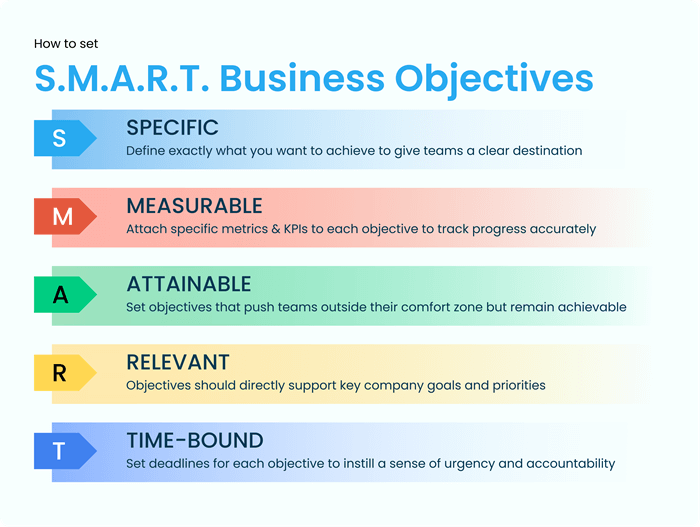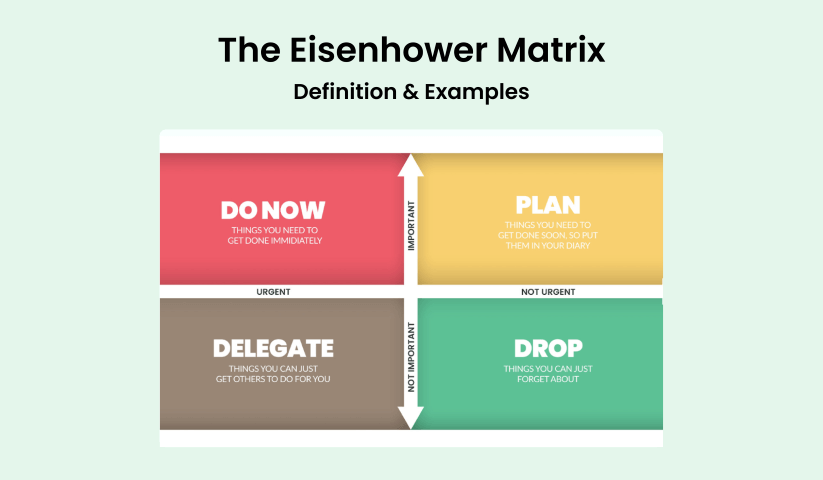Productivity Library
Set tiered goals and metrics: from purpose to precision
“Until your ONE Thing becomes part of your daily routine, you haven’t really set a goal you’ve just made a wish.” — The ONE Thing by Gary Keller
In the first stage of the Meta-productivity system, we explored how purpose brings clarity to work and life. But clarity without direction is still just potential. To turn purpose into progress, you need goals, and specifically, structured goals with intention and connected across time.
This second stage, Set Tiered Goals and Metrics, provides that structure. It is about building a bridge between your purpose and your daily actions. It answers the question: How do I translate what matters most into what I do today, this week, this month, and this year?
Think of it as knocking down dominoes. Your long-term purpose is the big domino at the end of the line. The small domino in front of you today may not look impressive, but if it’s the right one, it will lead to the next, and the next, until momentum builds. That’s the philosophy behind the “Goal Setting to the Now” framework, the third step in The ONE Thing philosophy by Gary Keller.
Aligning goals through time with "Goal Setting to the Now"
Gary Keller's “Goal Setting to the Now” is built on a single idea: that purpose needs to be translated into progressively smaller time-bound goals that guide your actions at every level. It starts with your Someday Goal – the ultimate vision tied to your purpose – and walks you backward into your Right Now Goal, the next physical action you should take.
Begin by asking: What’s the ONE Thing I want to achieve someday that fulfills my purpose? This could take years or even decades, and that’s okay. It’s meant to be your compass.
Then ask: What’s the ONE Thing I can do in the next five years to move toward it? This becomes your Five-Year Goal – a bold but realistic milestone.
From there, continue narrowing: What’s the ONE Thing I can do this year? This month? This week? Today? Right now? Each question sharpens your focus until you’re left with the next meaningful step on your to-do list.
This backward chaining creates radical alignment that brings momentum. You don’t need to build the empire today; you just need to tip the next domino.
Let’s say your Someday Goal is to run your own design firm.
Your Five-Year Goal might be to become a recognized lead designer.
Your One-Year Goal could be to launch a signature project that builds your reputation.
Then your Monthly Goal becomes developing that project.
Your Weekly Goal: completing key milestones.
Your Daily Goal: blocking two hours for focused design work.
Your Right Now Goal? Closing this browser tab and opening your design software
Measuring progress with purpose: OKRs for Individuals
“Goal Setting to the Now” helps you define a clear path from long-term purpose to near-term action. But while it gives you direction, it doesn’t always define what success looks like at each step. That’s where the Objectives and Key Results framework, or OKRs for short, comes in.
OKRs are a goal-setting system that originated at Intel and later gained global popularity through companies like Google. The framework is simple, but powerful:
An Objective is what you want to achieve. It should be qualitative, ambitious, and inspiring.
A Key Result is how you’ll measure progress toward that Objective. Each Key Result should be specific, numeric, and time-bound.
When used together, Objectives and Key Results provide both vision and precision. You’re not just stating what you want; you’re also defining exactly how you’ll know whether you're getting there.
OKRs are often used at the team or company level, but they can be just as effective for individuals. In fact, when layered on top of “Goal Setting to the Now,” they bring clarity and measurability to your purpose-driven roadmap.
Here’s how to use both frameworks together:
- Use “Goal Setting to the Now” to identify your big-picture goals and break them into smaller time-bound steps from Someday to Right Now.
- Apply OKRs to your Yearly and Monthly Goals to add measurable criteria. This helps ensure that your actions are not just aligned with your purpose, but also trackable and results-oriented.
- Review your OKRs regularly to gauge whether your execution is on track or if something needs to shift. We will discuss this step in details in a later article.
For example, let’s say your One-Year Goal is to launch a signature design project. That’s a great milestone, but on its own, it’s still vague. Turning it into an OKR might look like this:
Objective: Launch a creative design project that positions me as a leader in sustainable design.
Key Results:
- Complete and publish a case study by September.
- Secure three design collaborations by November.
- Reach 10,000 views or shares by December.
When integrated with your cascading goals, OKRs transform aspirations into action plans. They ground your focus and motivate consistent follow-through. You’re no longer guessing if you’re making progress. You know you are.
SMART Goals for clarity
In case you need some guide on crafting strong, actionable goals when writing your goals and OKRs, SMART is an acronym that helps you remember the five important criteria:
- Specific
- Measurable
- Achievable
- Relevant
- Time-bound
SMART is a quick-check method to ensure your goals – or your Key Results – are clear and practical.

So, how does SMART fit into the bigger picture?
- Use “Goal Setting to the Now” to define a direction, from your long-term purpose to your daily focus.
- Use OKRs to translate that direction into measurable outcomes, especially for Yearly and Monthly goals.
- Use SMART as a checklist to sharpen those Key Results and to write clear Weekly and Daily tasks that support them.
For example, if your Key Result is to “complete a case study by September”, your SMART-aligned Weekly Goal might be: “Draft the case study outline by Friday, including three client stories and selected visuals”.
SMART is especially helpful for building habits and setting short-term targets. Vague ideas like “write more” or “network better” become concrete, measurable actions:
“Write 500 words before 9am every weekday.”
“Attend one industry event every two weeks.”
By using SMART goals alongside OKRs and Goal Setting to the Now, you create a seamless system: big-picture clarity, measurable milestones, and daily execution working in sync.
What about the other tasks you have to do?
Let’s just admit - even with clear goals and measurable outcomes, there will always be noises: tasks that are not quite relevant to your goals and purpose, but somehow they come to you and demand your attention. Sometimes, the noise can be so loud that it makes you forget the ONE thing that matters in a moment. In such a case, the Eisenhower Matrix offers a simple yet effective way to filter your to-do list by asking two questions:
***Is it urgent? ***
Is it important?
It complements The ONE Thing by helping you eliminate distractions and clarify your ONE Thing’s position among competing tasks.

Urgent and Important – Do Now: Tasks that demand immediate attention – pressing deadlines, emergencies, and last-minute issues. Sometimes, your ONE Thing lands here, but only if it’s been neglected until urgency kicks in.
Important but Not Urgent – Plan: Strategic, proactive work—like planning, deep focus, and long-term projects. This is where your ONE Thing should live most of the time, protected from urgency. They’re easy to neglect because they don’t shout for your attention, but this is where meaningful progress happens.
Urgent but Not Important – Delegate: Tasks that feel pressing but don’t meaningfully contribute to your goals. Things like routine admin work, unnecessary meetings, or tasks that others are better suited to manage belong here. Delegate these whenever possible.
Not Urgent and Not Important – Drop: Distractions and low-value activities. Scrolling social media aimlessly, checking email compulsively, or attending irrelevant meetings – eliminate them to free up mental space.
Making it all work
Used together, these four abovementioned tools help you stay intentional. You know what matters, how to measure it, how to act on it, and how to avoid getting distracted along the way.
Here’s how to embed the system into your rhythm:
- Review your goals weekly: Are you hitting your daily and weekly targets? Are your actions still aligned with your larger goal?
- Adjust without guilt: If a goal is too ambitious or misaligned, refine it. Flexibility is a feature, not a flaw.
- Avoid perfectionism: The goal is not to forecast the future perfectly, but to create clarity in the present.
The point of tiered goals is not to trap you in a rigid structure. It’s to free you from guesswork. To help you wake up each day knowing exactly what to do – and why.
Final thoughts: Purpose deserves precision
A tiered goal system is more than a productivity tactic. It’s a commitment to alignment.
When your purpose is broken down into clearly structured goals, and each goal is supported by methods like SMART and measured with OKRs, you move with intention. You cut through the noise. You delegate what doesn’t require your focus. And most importantly, you give your best energy to what matters most.
But strategy alone won’t get you there. Execution matters. And so does rest. In the next articles, we’ll explore how disciplined action and well-timed breaks unlock true productivity.
